This time of year is full of contradictions. I watch as the weather moves from softly hued spring blue to fierce, slate grey blizzards, changing with a speed that makes it an impossible dance of hats and coats and waterproofs to get outdoors. March crocus hold their purple heads above the snow. Bare budding branches bend under the weight of new fall. In the community garden, I shake the snow from the daffodil necks, letting their yellow crowns rise boldly, refusing to be dimmed. Sun-bright or winter’s last call, these outward signs are what we measure time by — a weather eye on what might bring storms.
Today is my eldest sister’s birthday. Had she lived, she would have been sixty-three. My mother used to tell me of the narcissi that bloomed the day she was born. The weather was warm enough to sit outside in the maternity hospital garden, holding her first daughter in her arms. Daffodils and my sister will forever be connected. This wildflower speaks of death and rebirth, resurrection and renewal; I look for it each year as March comes.
It doesn’t get easier. Grief, nor love. These anniversaries bring the same dual aspect as her month, rounded with dark and holding light. But it is a day I try to celebrate, to honour the wild life she held, too briefly, but which shone so bright.
The two women who sat in that garden are both gone now. The one who birthed and the one who was born. And yet, I carry them within me, these wild mothers who raised me. The woman I am carries their light and dark. I am thankful for it all.
And so, tonight, I raise a glass to my sister, who taught me so much about living in this world wild. Tomorrow, on International Women’s Day, I shall raise a glass again — to all the wild women who have come before: the women who have raised me, guided and inspired me - my sisters, my mothers, my wild clan; the ancient women who have gone before, who were exiled and eradicated for their words and wild ways; and the earth, the wildest mother of them all, that still whispers of the wisdom that they knew: cronewort, cure-all, woman’s-best-friend.
To myself.
It is easy to forget how to be our own best friend. The daffodil, narcissus pseudonarcissus, representing self-love, is here to remind us how.
Be bold. Be your radiant, beautiful self. A blizzard may come, but that is no reason not to bloom.
I raise a glass to you.
…They were fierce, and unafraid, and most of all they were mine…
‘…In December 1982, thirty thousand women formed a twelve-mile-long human chain around RAF Greenham Common. They attached keepsakes, ribbons and children’s pictures to the wire fence, singing protest songs to save the Earth and make a stand against nuclear weapons. My three sisters were there.
It wasn’t long before the police came to break things up. The more the police shouted, the more the women refused to be silenced by force. When the police heavy-hauled my sisters into the van, they kept singing. My father told them they were ridiculous, but I thought they were amazing. They were fierce, and unafraid, and most of all they were mine…
These three sisters, who shone like copper and gold, came without me ever asking, to shore up the crumbling pieces of my world, stitching me back together with their crooked smiles and strong hands. Since my birth, they have carried me, fighting my corner in this world.
All wild women; sometimes bruised and wounded, but refusing to give in. Like my mother, they showed me how to be resilient in a world that can be unfair. More than that, they showed me that, despite its brokenness, it is a world worth fighting for…’
(Extract from Dandelion - All My Wild Mothers)
An invitation
Who are the women who have guided and inspired you? Who are the women who have helped you find strength and taught you to howl loud? Write a praise poem in honour of the wild women in your life. Don’t forget to include yourself!
Write a praise poem in honour of yourself. Begin with the words Just for today, I …
Whatever space you have - a windowbox or a wild meadow, if you want, you can use this coming month to start creating your own wild garden in honour of the wildest mother of us all - the earth!
Top Ten Plants for a Wild Woman Garden
In celebration of International Women’s Day, I am joined this month by Jane from Jemima’s Garden. We have selected our Top Ten Plants for a Wild Woman Garden to share here.
There is also a chance to win a hardback copy of All My Wild Mothers PLUS a fantastic selection of hand-picked wildflower seeds from Jemima’s Garden. Keep reading to the end to see the details of the competition.
Everything you need to get your own wild garden growing wherever you are!
Read on for our Top Ten Plants for a Wild Woman Garden
From Jemima’s Garden
Jemima’s Garden began as a small, independent grower and seller of Herbs and Wildflower plants. A change in circumstances and location led to a new start, and we now sell seeds to enable people to grow their own plants. With our climate and bio-diversity in crisis, we are determined to do what we can to help and encourage others to grow with nature in mind. All our seed varieties are chosen to benefit wildlife, and all our seed packets and packaging are as eco-friendly as possible.
We are re-planting our small garden, and by the end of 2023, most of the seeds we sell will have been grown by ourselves in a wildlife-friendly, pesticide-free environment.
My chosen plants are Clary Sage, Common Fleabane, Marsh Mallow, Self-heal and Great Mullein.
Clary Sage - Salvia sclarea – Hardy Biennial – Height up to 1m
Ruled by the Moon, Clary Sage has strongly scented large wrinkly leaves and very pretty pale pink flowers with mauve bracts.
The flowers are very attractive to Bees, Moths and other pollinators and it deserves a place in the garden for its unusual perfume alone.
It was used to flavour wine and in the sixteenth century, Clary was considered an aphrodisiac.
Clary Sage essential oil is extracted from flowering tops and used in cosmetics and aromatherapy to treat depression.
Common Fleabane - Pulicaria dysenterica - Perennial - Height up to 1m
Common Fleabane is a pretty, native perennial with downy leaves and golden yellow flowers.
It is a good source of pollen and nectar for a wide variety of bees, hoverflies, and butterflies, including the Brown Hairstreak butterfly and the Gatekeeper butterfly.
Fleabane has long been used to repel evil spirits from the home (and presumably fleas). Tie a bunch of the plant over your door lintel to repel all invaders.
Marsh-mallow - Althaea officinalis – Perennial – Height to 2.5 metres
Marsh-mallow is a tall wildflower with very soft grey-green leaves and delicate pink flowers.
Ruled by the planet Venus, dried Marsh-mallow can be carried in your pocket or your bag if you’re looking for love.
Marsh-mallow, (unsurprisingly) is a plant of marshes and saltwater estuaries but will happily grow in any moist soil where it will provide food for bees, hoverflies, and moths and will attract the insects that bats feed on.
If you’re unfortunate enough to get stung by a bee or wasp, rubbing the spot with a bruised Marsh-mallow leaf should remove the pain and inflammation.
Selfheal - Prunella vulgaris – Perennial – Height up to 30 cm
Selfheal is a creeping plant with purple flowers which attract bees and other beneficial pollinating insects.
It will happily creep through the grass in a meadow or lawn or can be used for ground cover.
As its names suggest, Selfheal, Hook-heal, or Heal-all has long been used as a medicinal plant having astringent and styptic qualities.
Selfheal is a good plant for healing magic, for example, by adding the dried plant to incense.
Great Mullein - Verbascum thapsus – Biennial – Height up to 2 metres
Great Mullein is a tall wildflower with large soft woolly leaves in its first year.
In the second year, a tall flowering stem appears covered in small pale yellow blooms, which provide pollen for bees.
Wool Carder Bees often collect fine hairs from the leaves to use as nesting material.
Great Mullein has been used in herbal medicines, added to smoking mixtures, and as a dye plant.
It is a protective plant that is used to instil courage, good health and divination. The dried leaves can be placed into a sachet, carried for courage, or placed beneath your pillow for sweet dreams.
From the wild mother’s apothecary garden…
All the plants seeded throughout All My Wild Mothers took root and grew in our apothecary garden. I have picked five of my favourite ones to celebrate the wild women in my life.
Mugwort - Artemesia Vulgaris
Cronewort, felon weed, mugweed
Drink cronewort tea to aid communication between the topside and other realms
Mugwort is associated with witchcraft, moon-magic and feminine shamanic practice. It can be inhaled or consumed to induce deep and lucid dreaming. Mildly hallucinogenic, it was traditionally considered a ‘woman’s herb’, used to promote menstruation and induce childbirth. It improves overall immune function and supports the stomach, pancreas and liver. It can be used to treat general aches and pains, insect bites, burns, irritated skin, colds, coughs and sore throats.
Mugwort grows well on wastelands, gravel pits, quarries, waysides, hedge banks and other rough ground.
Lemon Balm - Melissa Officinalis
Heart’s delight, bee-balm, cure-all
Use lemon balm to ward off evil and promote good cheer
Lemon balm was known as the Elixir of Life, bound to the moon and water. Named after the Green nymph Melissa, the protectress of bees, it is antibacterial, antiviral, sedative and has antihistamine properties. One of the earliest known medicinal herbs, its use dates back over two thousand years. It can treat colds, influenza, fevers, excess, insect bites and wounds and relieve anxiety, depression, insomnia, migraine and shock. It can be made into a tea or tincture, used as a herb, or added to the wax to bring a good shine to wood. It is highly attractive to pollinators.
Lemon balm can be difficult to establish but will grow prolifically once it is settled.
Wild Marjoram - Origanum Vulgare
Joy-of-the-mountain, grove marjoram, pot marjoram, wintersweet
Place wild marjoram in your bath for seven days to bring relief from sadness and grief
Wild marjoram is a powerful plant for dispelling negativity. Associated with Aphrodite, the Greek goddess of love, it is used for relieving symptoms of menopause and premenstrual tension and promoting breast milk production. The leaves and flowers can be made into a tea to relieve insomnia, migraines, back pain, dizziness and depression and to treat coughs, colds, loss of appetite, stomach cramps and trapped wind. It is an excellent source of nectar and pollen for bumblebees and butterflies.
Wild marjoram grows well on dry, infertile scrub areas.
Lady’s Mantle - Alchemilla vulgaris
Bear’s foot, dewcup, woman’s-best-friend, nine-monks, fair-with-tears
Carry in your pocket to overcome fears associated with childbirth
Lady’s mantle draws its botanical name from the art of alchemy. Energetically, it is considered helpful in transforming painful experiences into something better. Associated with the goddess Freya, it was traditionally used as a tonic for the female reproductive system and to encourage fertility in later years. It can be used to strengthen the uterus and encourage contractions. It can be applied topically as a wash during labour to reduce perineal tearing and to speed up healing postpartum. It can help balance hormones, reduce premenstrual symptoms, and ease menopausal complaints such as sweats, anxiety and mood swings. A poultice made from the mashed young leaves is good for hands damaged from gardening, and topical use is said to improve breast elasticity and reduce visible signs of ageing.
Lady’s mantle grows well on unimproved grassland, roadside verges and banks.
Calendula - Calendula Officinalis
Merrybud, marigold, summer’s bride
Hang a wreath of marigolds over your door to stop evil from entering your home
Calendula has been popular as a medicinal, culinary and magical plant throughout the ages. It was used by ancient Egyptians, Greeks, Romans and Aztecs for culinary and healing purposes. Its Latin name calends refers to its habit of flowering at the beginning of each month, and it has a long association as a woman’s herb, used to ease menstrual problems. Anti-fungal, anti-inflammatory, antibacterial and antiseptic, it is used in healing salves, washes and creams to treat minor wounds, insect bites, burns and skin irritation. The petals create a light golden dye, similar to saffron, for cosmetic and culinary use. Leaves and flowers are edible and rich in fibre and vitamins. Planted alongside vegetables, they protect against various pests above and below the soil. Often planted at the door to welcome good luck and prosperity and on graves to protect and guide the dead.
Calendula grows well on roadsides, rubbish tips and wastelands.
Competition
Want to win a signed, hardback copy of All My Wild Mothers PLUS a selection of hand-grown, handpicked wildflower seeds from Jemima’s Garden?
Just comment below, telling us what your favourite wildflower is and why. The winner will be announced on 19th March - UK (Wild) Mother’s Day.
Love Potion
A brew to ease the heart and foster self-love
A blend of apothecary rose petals, elderflower blossom, lavender, blackberry blossom and wild strawberries. Steep in boiling water and sip hot or cold.
Buy All My Wild Mothers
That’s all, folks, for now. Thanks for joining me and subscribing. I hope you have enjoyed the read. It’s free, but if you want to support me, you can buy All My Wild Mothers, tell people about it, post reviews and help blow the dandelion seeds out into the world. It is all appreciated.
Please remember, if you share any of the images or words, make sure to credit them to Victoria Bennett. Thanks.




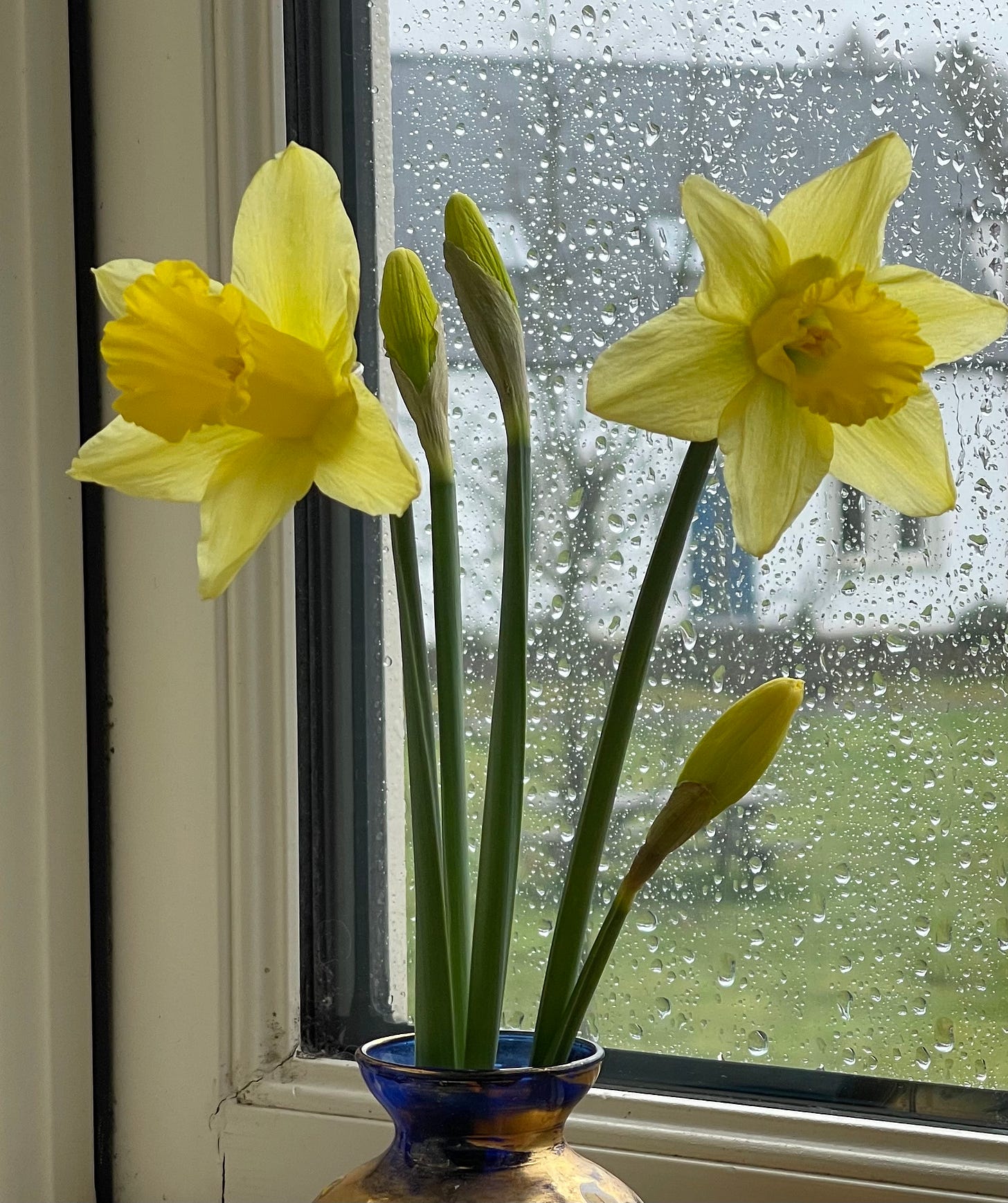
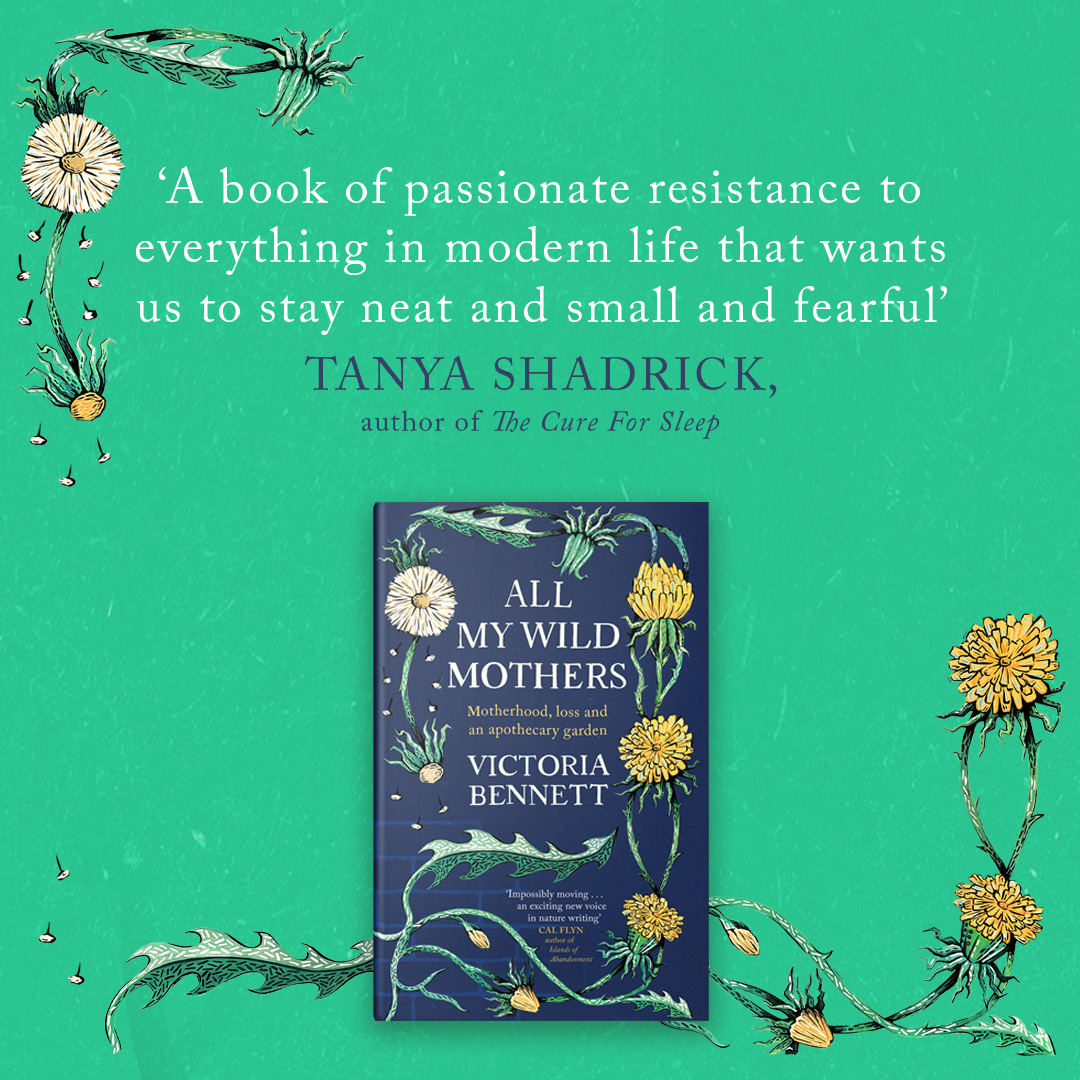



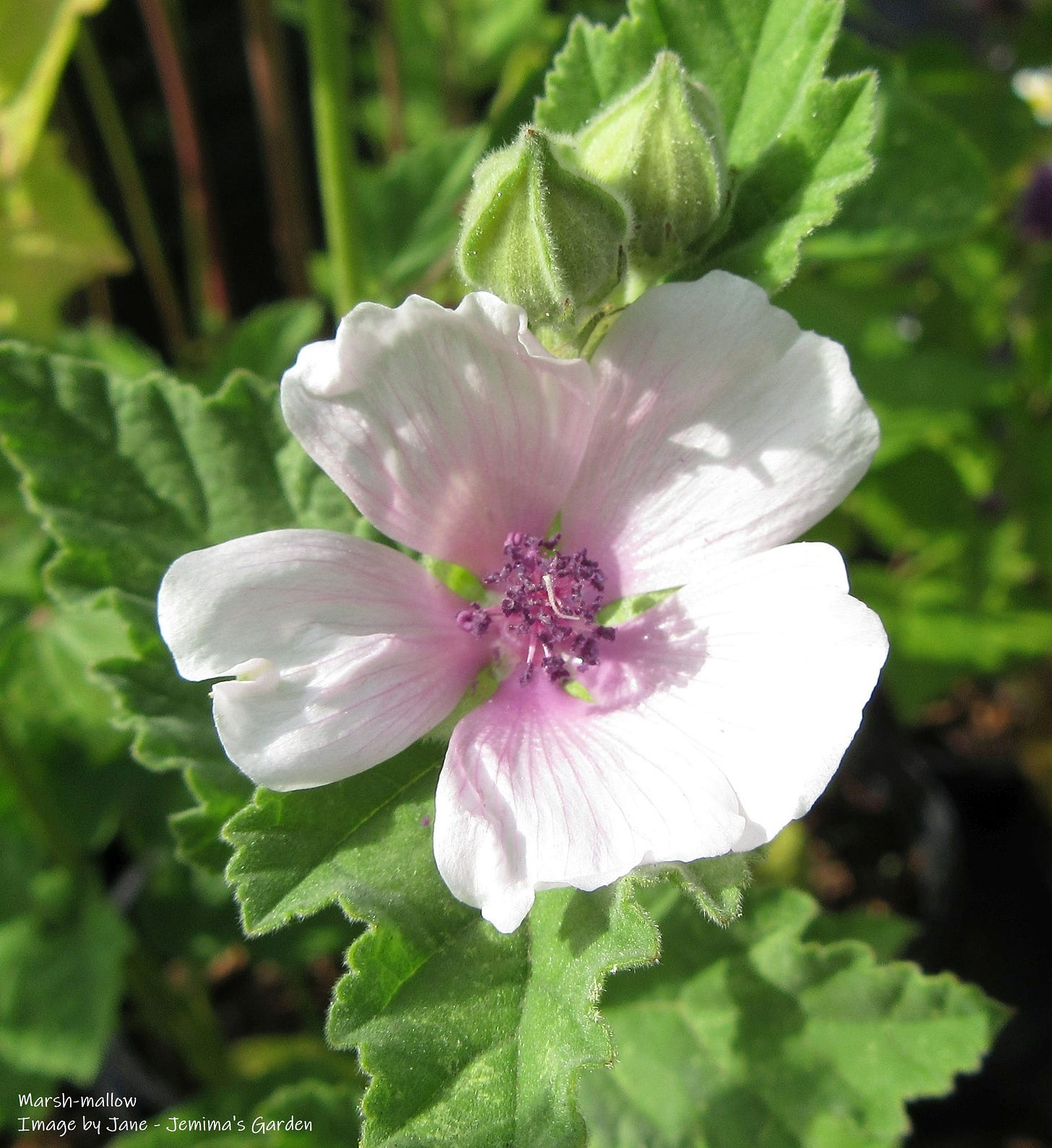

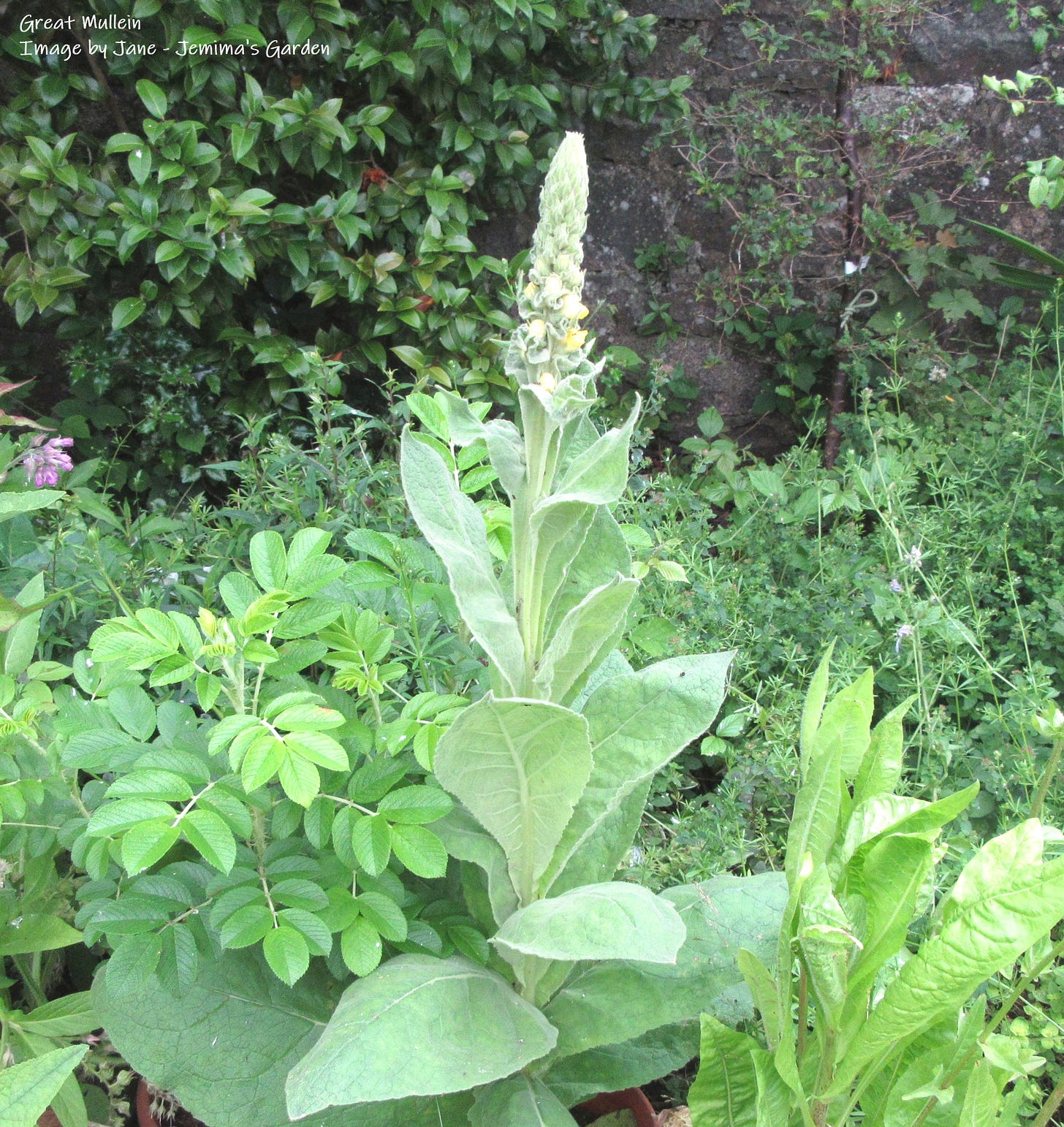

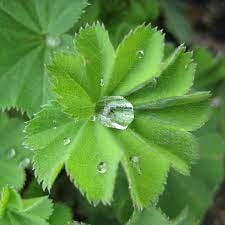

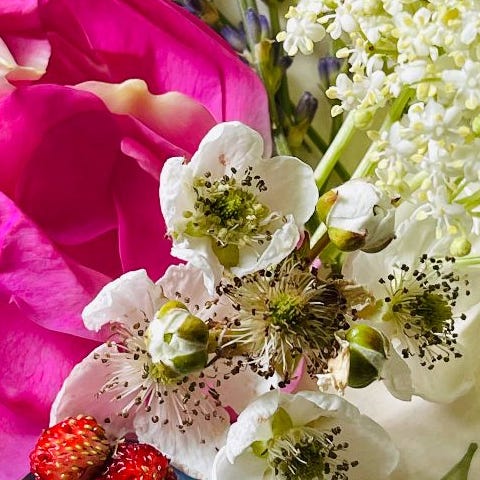


Another wonderful post
My favourite wildflower is the foxglove, the intricate details of the flowers and how they sway in the breeze, the bees spend hours in and out of them, they get a bad reputation but like all things there's beauty in their danger
Just beautiful. Thank you